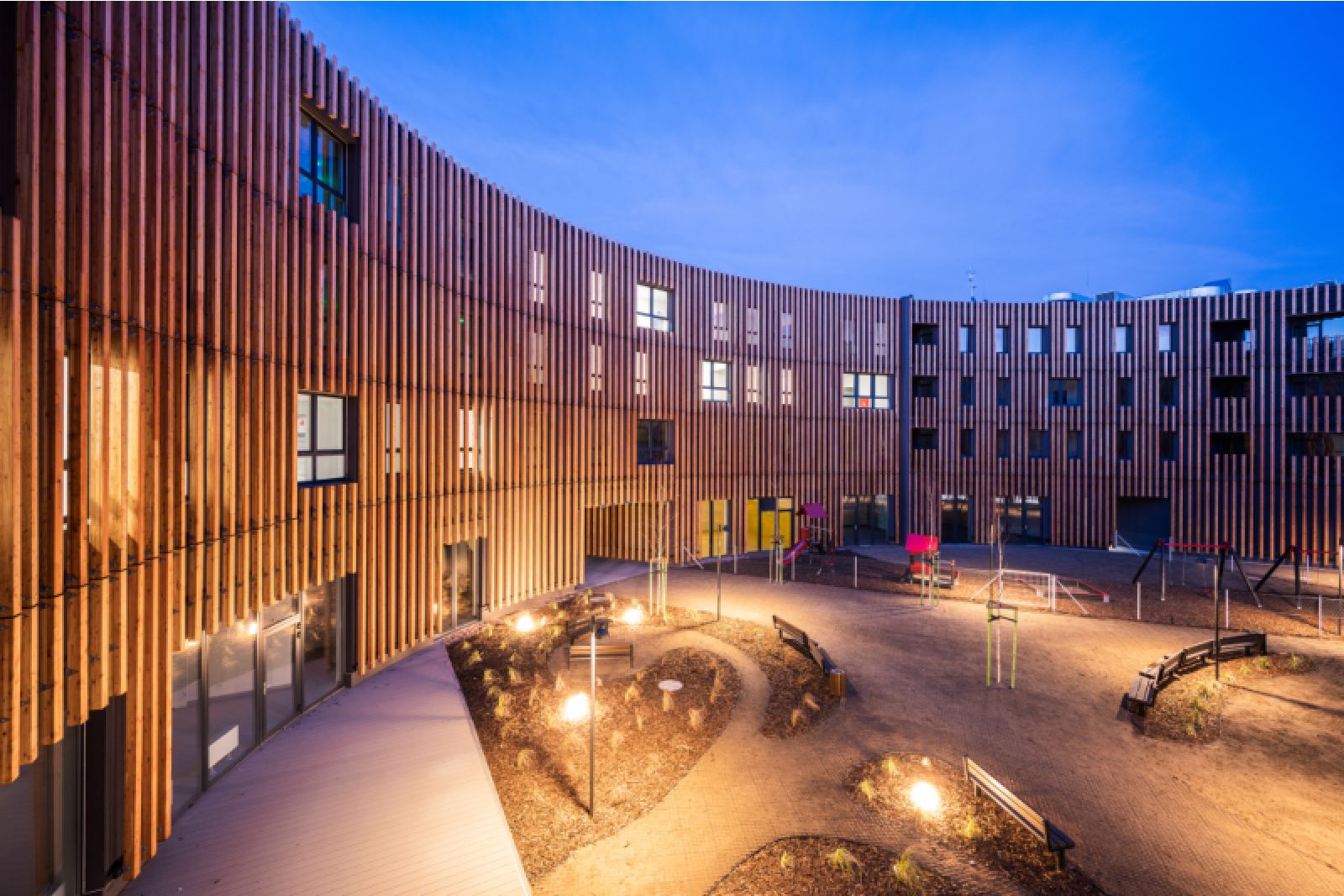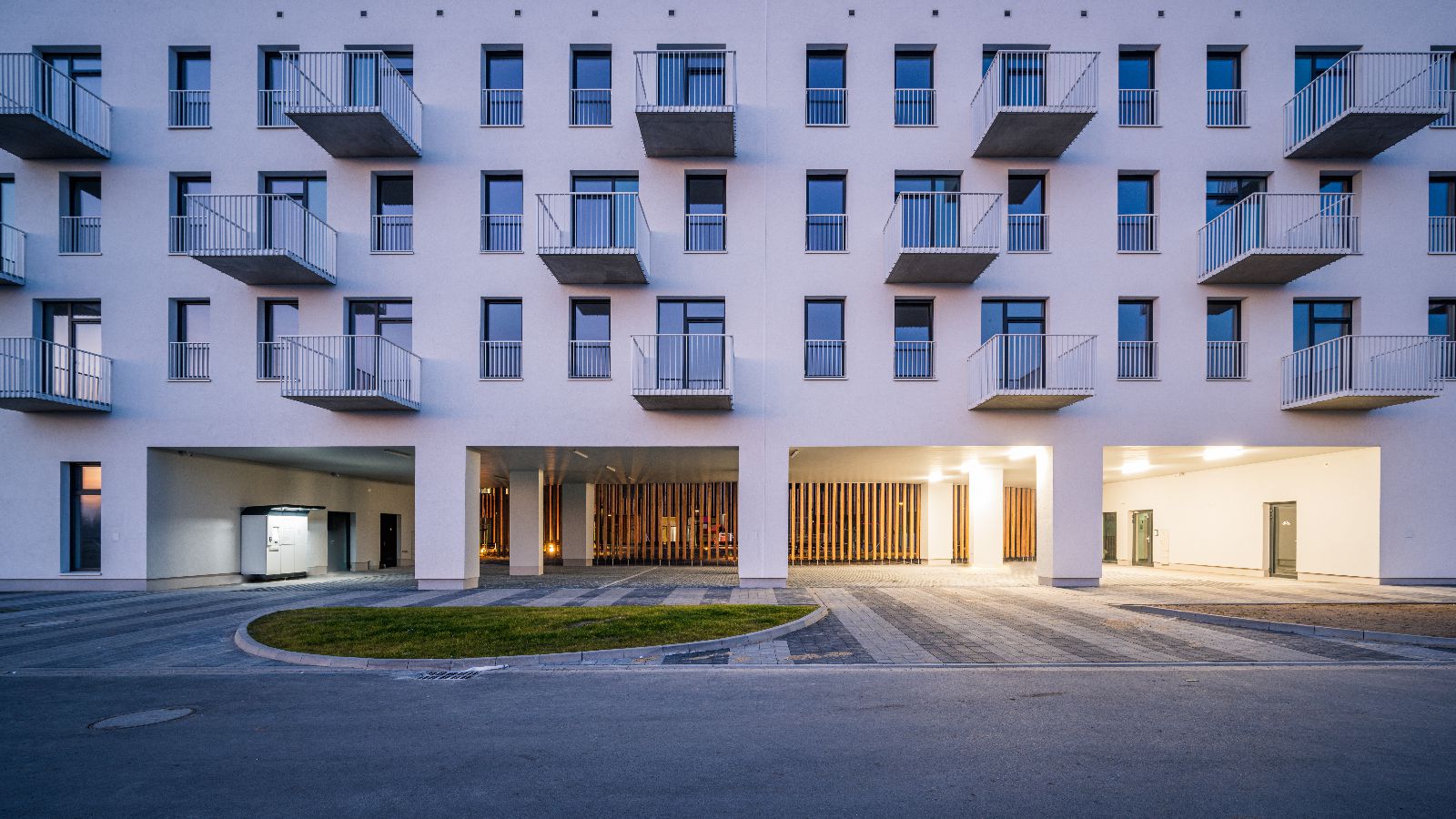Multigenerational house is a social housing located in Wrocław, Poland. The building design combines three functions for three generations: flats with a care service for the elderly and the people with disabilities, flats for rent dedicated for the young and families, and a nursery school on the ground floor.
House generates 117 apartments, sized from 38qm up to 79qm, with different typologies.The building is part of the model housing estate Nowe Żerniki. Local architects colectively tried to respond to the growing housing problems and poor spatial quality. Build stage I of the estate offers a complete range of social services and public spaces powered by sustainable technical infrastructure.
One of the initial assumptions of the project was to create a facility conducive to the integration of all its residents and users. As a result of the discussion on the different lifestyles of individual age groups, it was decided that their needs are not only mutually exclusive. On the contrary, all efforts should be made to create multi-generational structures.
Their coexistence in one building is a beneficial activity in many ways – it teaches mutual respect and prevents the feeling of exclusion, supports the activation of seniors, gives residents a sense of security thanks to the constant presence of neighbours, makes children and grown-ups accustomed to everyday functioning with the elderly and the people with disabilities. Multigenerational house was designed as a quarter.
A spacious and green courtyard has been designed inside of the four-storey building. Its oval shape resulted from the desire to create a friendly space without barriers and visual divisions. This form makes it easier to establish neighbourly relations. It also allowed for a functional solution of the communication spaces in the building by linking them with attractive common areas for residents. The inner courtyard is not an introverted space.
The perforations in the ground floor zone provide visual contact with the building’s surroundings, and the main entrance to the courtyard, designed as an oblique cut, is visually linked with the nearby park and local cultural centre. Trees and grass were also planted in this area. The oval yard programme consist of a recreation area for the elderly near to the seniors’ club room, an outdoor gym zone, public playground and private one for nursery school and a places to sit.

Photo © Maciej Lulko
The homogeneous character of the object resulting from its external form was also maintained in its internal structure. It is functionally divided into two independent parts – one for seniors and second with apartments for rent. They have independent entrances, staircases and communication through a corridor running parallel to the perimeter of the building. Thanks to that, the division of the building is smooth and flexible.
It is possible to change it depending on the demand for a specific type of apartments. In addition, it is an example of the idea ofconnecting generations – by enabling the elderly and young people to live together in one space, we can provide them with psychological comfort resulting from the closeness of the family, while giving them a sense of independence and amenities appropriate to their age and needs. Source by major architekci.
- Location: Nowe Żerniki estate, Wrocław, Poland
- Architect: major architekci
- Project Team: Marcin Major, Anna Major, Paweł Major, Alicja Miasik, Marta Górniak, Przemysław Spadło, Marlena Kilian, Hanna Łopacz, Maria Więcław
- Construction: Łukasz Zimny
- Investor: TBS Wrocław Sp. z o. o.
- Area: 8,200 m2
- Year: 2020
- Photographs: Maciej Lulko, Courtesy of major architekci







